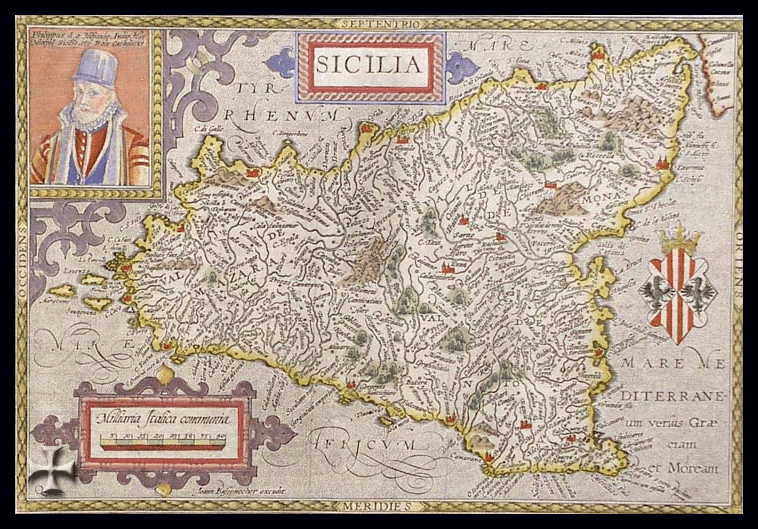Fabrics narrating the history of Sicily
Fabrics and artefacts held in museums and collections around the world tell centuries of encounters, ideas, intellectual exchanges in a Sicily marked by multiple cultures, from which it acquired knowledge and techniques.


It is by the will of Ruggero II d’Altavilla, the first king of Sicily, that around 1130 the Nobiles Officinae were born. These are royal laboratories annexed to the Royal Palace of Palermo specialized in different artistic areas. Also known by the Arab name Tiraz, they constituted the most sophisticated manufacture of the Kingdom of Sicily in the Norman-Swabian age.

It is from here that the most precious and sumptuous textile production of the time will come out, whose emblem is represented by the famous mantle of Ruggero II, a silk semicircle embroidered in gold, pearls, enamels. "The red worked swarmed fabric, attributed to the Byzantine manufacture", was embroidered in 1133 by "skilled workers specialized in the art of decoration with needle which, according to Muslim tradition, they embroider in the name of the sovereign".
The famous mantle, kept in the Kunsthistorisches Museum in Vienna, is a symbol of an island reconquered to Christianity but not for this reason unable to maintain different populations and cults. It is perhaps the most famous artifact of an art that will feed on chance visits, questions, intrusions and even loans to produce the elusive and enchanting forms, designs and images, imprinted in the velvets, in the damasks, in the silks that survived the passage of time.


Fabrics that bring together sacred and profane, luxury and everyday life; fabrics that confirm the centuries-old social, economic and cultural relationships between the Mediterranean area and continental Europe; fabrics that were abandoned by the nobility of the island that with the passage of time changed role and needs. A nobility who loved to reinvent places and spaces that became the scene of a ritual and sumptuous baroque sociability, which found in the textile apparatus, drapes and tapestries the ideal frame through which to express the pomp of power and seek the attention of the public and its admiration. Textile works generated by self-celebrating intent.

Shortly thereafter, the "English masters" of the new non-European trade routes will introduce "printed silks and cottons which will influence the decorative language". Thus, "The taste for exoticism is accentuated and in the eighteenth century gives rise to the phenomenon of rarity collecting from Turkey, Persia, India, but above all from China and Japan" together with influences and suggestions that will then be translate in models for local craftsmen ready to imitate and renew their techniques, demonstrating that the insularity of this land has never been an obstacle or a closure to men, goods, techniques, ideas.
And that’s how to read about fabrics is equivalent to read about openness, exchange and mutual enrichment.


